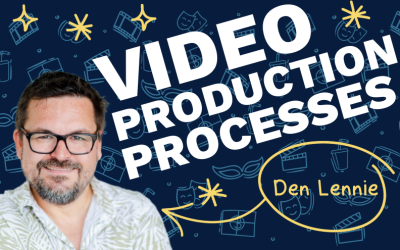System Architect | Chris Smith: curaytor.com
Making sales calls can be challenging and daunting at times. Some may say they even inspire fear.
Often, the reason for low success rates with sales calls is due to the lack of an engaging, structured, and interesting approach, which is attention-grabbing enough to make your lead want to stop what they’re doing and really listen to what you have to say.
This doesn’t have to be the case though. When well-planned and structured, along with paying particular attention to the most impactful component of a sales call (the opening and the closing), they really can be a success.
This two-part, 7-step guide developed by Chris Smith (connect with him here), will help you from your opening, to your closing and everything in between.
Get ready to start nailing your sales calls and dramatically increase your sales ratios in no time.
Part 1 – Opening Strong
Step 1: Follow the 3 critical components of successful sales calls
Speed
- If you attempt phone contact within 5 minutes after lead submission, the odds that the lead is contacted are 100 times greater than if it is contacted 30 minutes after the submission.
Tenacity
- When a lead is not answering your call, immediately dial a second time right after the first and you will get 22-25% more answer rate.
- If you call a lead once, even within the first 5 minutes, you have a 48% contact rate. If you call additional 5 times over a 3-day period, you can get 93% contact rate.
- Differentiate your methods – every lead gets call, text, email.
- Best times to call: middle of the week (Wednesday, Thursday), between 8 am and 10 am, and between 4 pm and 6 pm.
Script
- Gain control of the call early by perfecting your first minute. If you can set the tone within the first minute, then you are in charge on this call.
- “Hey this is XXX, calling from XXX. I see your working at XXX and you’re looking at using our services. Can you please grab a pen and paper since I’m going to share some information about what we do that isn’t on the Internet – please let me know when you’re ready.”

Step 2: Pre-call preparation – set yourself up for the call
- When you’re calling a lead, investigate to get information about them. You need to make yourself liked and trusted.
- Suggestion! Instead of Googling a prospect’s name, search for their email to dramatically narrow the results.
- Use tools like Charlie App to speed up this process.
Step 3: Handling brick wall statements by acknowledging, responding and then pivoting
- Acknowledge – repeat the question you got from the lead.
- Respond – give a reply but don’t give the information they require.
- Pivot – get back to what you want to talk about.
- For example:Prospect: “Well I just want to know how much your <products/services> are.”Acknowledge: “Oh great question, so you just want to know how much our <products/services> are.”Respond: “Our <product/service> isn’t inexpensive… <product/service> isn’t for everyone…”
Pivot: “Are you <one type or lead> or <another type of lead>?”

Part 2 – Closing Strong
Step 1: Identify 4-6 features + benefits and tie downs
- Here’s one Feature of working with me, here’s the Benefit of that feature for you, do you agree there’s a benefit? Or is that interesting to you?
Step 2: Script the transitioning closing statement
- At the end of listing the features, benefits and tie downs, tell the prospect “Ok great, here’s what happens next… I’m going get <insert next step>… and I’ll start <insert another step>.
Step 3: Use a trial close
- Ask them a question about the next steps, assuming they’re going ahead – this is not a “Yes or No” question but rather an “Either/Or” question.
- Example: Is this better for you in the morning or early in the evening?
Step 4: Make the final close
- Give two last choices about when they’re starting with your product or service.
- Example: Would you prefer your coaching on a Tuesday or a Thursday.
Ready to pick up the phone and make your next sales call now? We bet!
You can now see why sales calls don’t need to instill fear, but excitement! With this guide by your side, not only will you see a change in your sales ratios, but you’ll see a boost in your sales skills and confidence too – If that’s not a bonus then we don’t know what is!
 System Architect – Chris Smith
System Architect – Chris Smith
Chris Smith is a USA Today bestselling author and the co-founder of Curaytor, a Facebook Advertising, digital marketing and modern sales company that helps businesses grow faster.
In the last four years, he used the blueprint in his book, The Conversion Code, to grow Curaytor to over $12 million in annual, recurring revenue without raising any venture capital. His work has been featured in AdWeek, Forbes, Inc., Entrepreneur, Fortune, The Huffington Post and by many other publications.
Prior, Chris worked for two billionaires (Dan Gilbert and Lou Pearlman), a near billion dollar publicly traded company (Move Inc.) and a start up (DotLoop) that was acquired for $108 million (by Zillow Group).
His first book, Peoplework, raised over $73,000 on Kickstarter, has more than 50,000 copies in circulation and received endorsements from the CEO of Zappos and Gary Vaynerchuk, who wrote the foreword.
Chris is a highly sought-after keynote speaker and is a perennial on the most influential people in the real estate industry lists.










